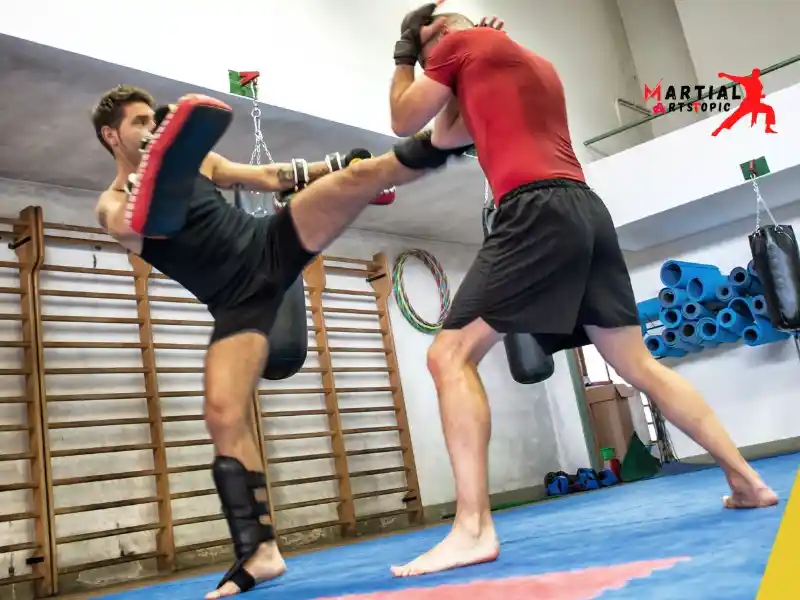
French Kickboxing: Savate Art the of Combat with Style
French Kickboxing, also known as Savate, is a unique and stylish martial art that combines combat techniques with elegance. Originating in France, Savate has gained popularity worldwide for its practical self-defense applications and graceful movements.
The Origins of French Kickboxing
Savate traces its roots back to 19th century France, where it emerged as street fighting among the working class. Initially developed as a method of self-defense in urban environments, Savate incorporated elements of traditional French foot-fighting techniques along with influences from various other martial arts styles. Over time, it developed into a structured discipline with defined rules and regulations.
Key Principles and Techniques
One of the distinguishing features of French Kickboxing is its emphasis on striking with the feet and the hands. Practitioners are trained to deliver powerful kicks and punches while maintaining agility and fluidity in their movements. Footwork plays a crucial role in Savate, enabling fighters to swiftly maneuver around opponents and create openings for attacks.
Besides striking techniques, Savate also incorporates defensive maneuvers such as parries, blocks, and evasive footwork. This comprehensive approach to combat ensures that practitioners are equipped to both launch effective attacks and defend themselves against incoming strikes.
The Artistry of Savate
Beyond its practical applications, French Kickboxing is celebrated for its aesthetic appeal and theatrical flair. With its intricate choreography of kicks, punches, and dynamic footwork, Savate showcases a blend of athleticism and artistry. The visual spectacle of skilled practitioners engaging in controlled sparring matches demonstrates the fusion of combat with style that defines this martial art.
Global Impact and Contemporary Practice
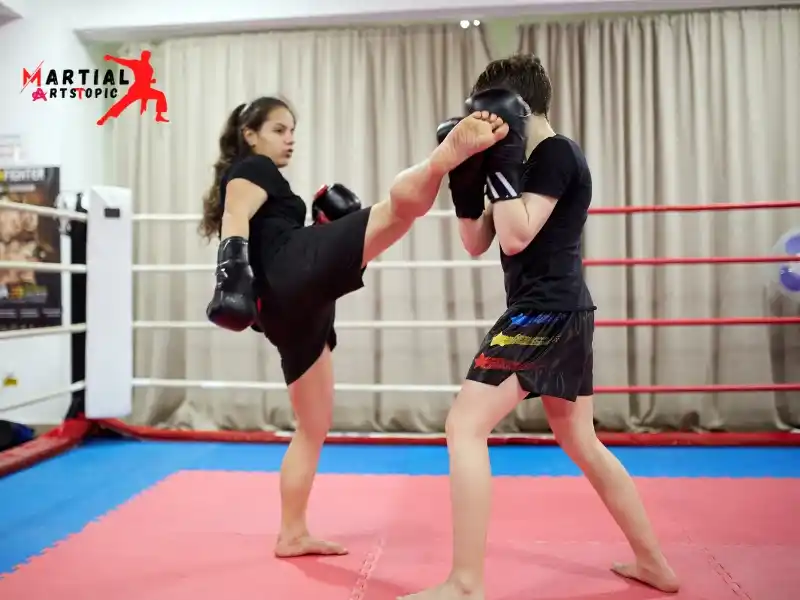
In recent years, French Kickboxing has gained traction in international martial arts communities, attracting practitioners who appreciate its combination of technical precision and cultural heritage. Its inclusion in combat sports competitions has further elevated its profile on the global stage.
For those seeking an alternative approach to striking-based martial arts training, Savate offers an interesting option that emphasizes finesse alongside effectiveness. Whether practiced for fitness, self-defense, or competitive purposes, French Kickboxing continues to inspire individuals seeking a dynamic and expressive form of physical discipline.
In summary
French Kickboxing, also known as Savate, is a unique martial art that combines elements of traditional boxing with graceful kicks. It originated in France and has gained popularity worldwide because of its effective striking techniques and emphasis on footwork. Additionally, Savate incorporates the use of specialized footwear for both offensive and defensive maneuvers.Furthermore, practitioners of French Kickboxing are trained to maintain distance from opponents while delivering powerful strikes using their hands and feet. The sport places a strong emphasis on agility, precision, and strategy, making it an exciting discipline for individuals looking to improve their overall physical fitness and self-defense skills.
What is French Kickboxing?
French Kickboxing, also known as Savate, is a unique martial art that combines elements of traditional French boxing with sophisticated kicking techniques. Originating in 19th century France, this dynamic fighting style emphasizes agility, precision, and powerful strikes using the hands and feet. Practitioners of French Kickboxing undergo rigorous training to develop their dexterity and timing, honing their ability to deliver swift and impactful strikes while maintaining defensive maneuvers. The discipline of French Kickboxing promotes not only physical prowess but also mental fortitude, making it an excellent choice for individuals seeking a well-rounded combat sport experience.
The History and Origins of French kickboxing
French kickboxing, also known as Savate, has a rich and fascinating history that traces back to 19th-century France. This unique martial art combines elements of traditional boxing with graceful kicks, making it a distinctive and effective self-defense system. The origins and evolution of French kickboxing, shedding light on its historical roots and cultural significance.
Origins of French Kickboxing
The history of French kickboxing can be traced back to the streets of 19th-century Paris, where it emerged as self-defense among the working-class population. Known for its emphasis on footwork and agility, sailors and street fighters who sought to protect themselves in the bustling urban environment originally practiced Savate.
One of the defining features of French kickboxing is its incorporation of specialized footwear called “chausson,” which allowed practitioners to deliver powerful kicks while minimizing the risk of injury. This unique aspect distinguishes Savate from other forms of kickboxing and reflects its historical roots in French culture.
Evolution of French Kickboxing
As time progressed, French kickboxing developed from a practical form of self-defense into a codified martial art with structured techniques and training methods. The establishment of formalized rules and competitions further contributed to the development and popularization of Savate as a sport.
Besides its practical applications, French kickboxing became renowned for its graceful and dynamic movements, captivating audiences with its blend of athleticism and precision. Its evolution from a street fighting style to an organized combat sport showcases the adaptability and endurance of this martial art over the centuries.
Cultural Significance
French kickboxing holds a special place in the cultural heritage of France, serving as both a symbol of national identity and a source of physical expression. Its influence can be observed in various aspects of French society, from traditional celebrations to contemporary sports events.
The discipline and dedication required to primary Savate reflect timeless values that resonate with practitioners around the world. Beyond its physical techniques, French kickboxing embodies principles such as respect, perseverance, and honor, making it not only a martial art but also a philosophy for personal growth.
Fundamentals of French Kickboxing
French Kickboxing, also known as Savate, is a dynamic martial art that combines traditional boxing with kicking techniques. It emphasizes footwork, agility, and precision strikes, making it an effective and engaging form of self-defense and fitness training. The fundamentals of French Kickboxing include mastering the basic punches, kicks, and defensive maneuvers while developing strength, flexibility, and overall conditioning. By incorporating elements of both Western boxing and French foot fighting, practitioners of French Kickboxing can cultivate a well-rounded skill set for striking and evasive techniques. Embracing the principles of discipline, respect, and perseverance, individuals can experience a fulfilling journey in honing their abilities through the art of French Kickboxing.
Stance and Footwork
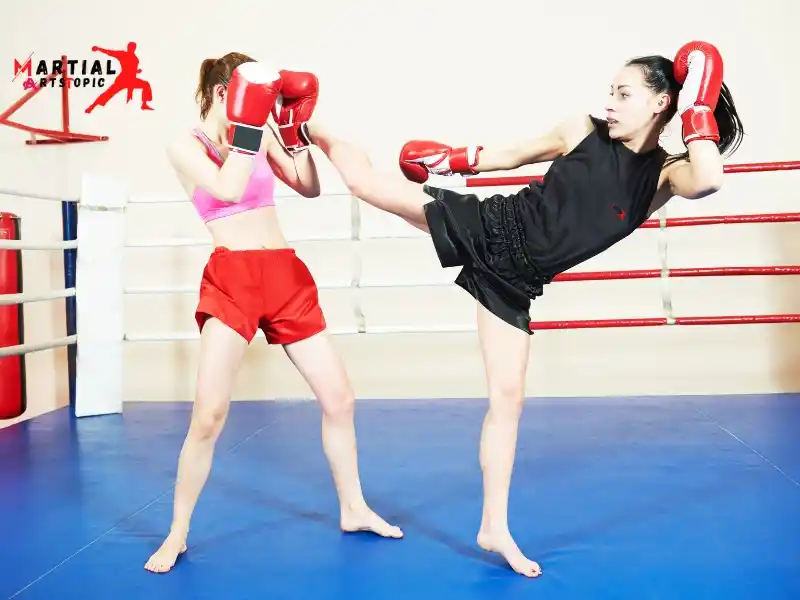
One of the foundational aspects of French Kickboxing is mastering the proper stance and footwork. The stance in Savate is typically more upright compared to other striking arts, allowing for quick movement and fluid transitions between offensive and defensive techniques. It’s essential to maintain a balanced posture while keeping your feet shoulder-width apart, distributing your weight evenly.
When it comes to footwork, agility and precision are key. Practitioners are trained to move swiftly around their opponents, using lateral and circular movements to create angles for effective strikes and evasive maneuvers. By mastering the art of footwork, fighters can control the distance between themselves and their opponents while staying light on their feet.
Basic Strikes
Savate incorporates a wide range of striking techniques, including punches, kicks, knees, and elbows. Each strike is executed with precision and power, emphasizing speed and accuracy.
- Punches: The basic punches in French Kickboxing include jabs, crosses, hooks, and uppercuts. These punches are delivered with explosive force from the hips and core, often in combination with swift footwork to maximize impact.
- Kicks: Kicking techniques in French Kickboxing encompass a variety of strikes such as roundhouse kicks, front kicks, side kicks, and more. These powerful strikes are executed with precision targeting and can be deployed at varying heights to keep opponents off balance.
- Knees: Utilizing knee strikes allows practitioners to engage in close combat scenarios effectively. With proper technique, knee strikes can be devastatingly effective when delivered from within the clinch or at mid-range distances.
- Elbows: Elbow strikes are versatile weapons in French Kickboxing, capable of inflicting significant damage at close quarters. Fighters are trained to deliver elbow strikes with fluidity and precision while maintaining defensive awareness.
Defensive Techniques
Besides offensive strikes, mastering defensive techniques is crucial for any practitioner of French Kickboxing. Defensive strategies include blocking incoming strikes with arms or shins while maintaining good head movement to evade attacks effectively.
- Parrying: This technique involves redirecting an opponent’s strike away from its intended target using precise hand movements. Parrying allows fighters to create openings for counterattacks while conserving energy.
- Slipping: By moving their head off the centerline of an incoming strike, practitioners can “slip” past attacks while setting up opportunities for effective counters.
- Clinching: The clinch is a fundamental aspect of defense in close-quarters combat. Practitioners learn how to control their opponents’ posture within the clinch while avoiding potential threats such as knee strikes or elbows.
Techniques and Movements
French Kickboxing, also known as Savate, is a dynamic martial art that incorporates a combination of graceful kicks and precise hand strikes. The techniques and movements in French Kickboxing emphasize agility, flexibility, and strategic footwork. Practitioners learn to execute powerful kicks such as the chasse bas (low kick) and fouetté (whip kick) with precision and speed. Additionally, the art includes intricate defensive maneuvers and fluid combinations that require both mental acuity and physical prowess.
French kickboxing techniques
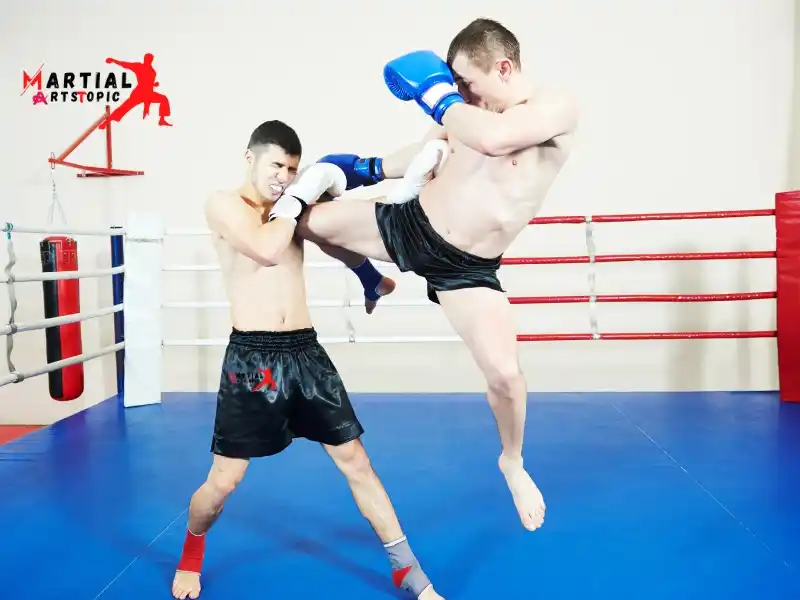
- Savate Kicks: The hallmark of French kickboxing is its unique emphasis on kicking techniques known as “savate kicks.” These kicks are executed with finesse and precision, making them both elegant to watch and formidable in combat. From the front kick (coup de pied) to the roundhouse kick (chassé lateral), mastering these kicks requires dedication and practice.
- Boxing Techniques: Besides its distinctive kicking style, French kickboxing incorporates traditional boxing techniques such as jabs, crosses, hooks, and uppercuts. The combination of swift footwork and precise punching makes for a dynamic striking game that sets French kickboxing apart from other martial arts disciplines.
- Footwork and Mobility: Fluid footwork is essential in French kickboxing, enabling practitioners to move gracefully while maintaining balance and control. This emphasis on mobility adds an element of dance-like movement to the art, enhancing both its aesthetic appeal and functional effectiveness in combat situations.
- Defense Strategies: Beyond offensive techniques, French kickboxing places great importance on defensive maneuvers such as parries, blocks, and evasive footwork. Mastering these defensive strategies is crucial for maintaining a vigorous defense while looking for opportunities to counterattack.
- Combinations and Flow: As with any martial art form, fluidity in transitioning between different techniques is key in French kickboxing. Practitioners learn to seamlessly combine various strikes and movements to create a continuous flow of attacks that keep opponents off balance.
Movements for French kickboxing
- Retreating Jabs: A fundamental movement in French kickboxing involves executing quick jabs while moving backward, creating distance from an opponent while still inflicting damage.
- Lateral Shuffle: Practitioners utilize lateral shuffling movements to swiftly change angles of attack or evade incoming strikes with agility.
- High-Low Kicking Combinations: This technique involves fluidly transitioning between high kicks targeting the head or upper body and low kicks aimed at the legs or midsection, keeping opponents guessing and off-guard.
- Spin Kicks: Advanced practitioners may incorporate spin kicks into their repertoire, adding an unpredictable element to their striking game while showcasing impressive athleticism.
Training and Conditioning
Training and conditioning for Savate, it’s essential to focus on building strength, agility, and endurance. Incorporating a mix of cardio, resistance training, and flexibility exercises can greatly enhance your performance in the ring. Additionally, practicing specific French Kickboxing techniques such as kicks, punches, and footwork is crucial for mastering this dynamic martial art. Consistent training and conditioning tailored to the demands of French Kickboxing will not only improve your physical abilities but also boost your confidence in the sport.
Conditioning for French Kickboxing
Before diving into the specific training tips, it’s crucial to emphasize the importance of conditioning in French Kickboxing. Conditioning plays a pivotal role in building stamina, strength, and agility – all of which are fundamental for excelling in this dynamic martial art.
- Cardiovascular Endurance: Effective French Kickboxers possess exceptional cardiovascular endurance. To achieve this, incorporate activities such as running, cycling, or high-intensity interval training (HIIT) into your routine. These exercises will elevate your heart rate and improve overall endurance levels.
- Strength Training: Enhancing muscular strength is equally vital for French Kickboxers. Engage in resistance training exercises targeting major muscle groups, including squats, lunges, deadlifts, and core strengthening exercises like planks and Russian twists.
- Flexibility and Mobility: Maintaining flexibility is key to executing swift kicks and fluid movements in French Kickboxing. Integrate yoga or dedicated stretching routines into your regimen to improve flexibility and mobility.
Training Tips for French Kickboxing
- Technique Refinement: Devote ample time to refining your striking techniques such as punches, kicks, elbows, and knees. Pay meticulous attention to form and precision during practice sessions.
- Sparring Practice: Engaging in controlled sparring sessions with a partner is an excellent way to apply learned techniques in a realistic setting while honing defensive maneuvers.
- Bag Work: Incorporate heavy bag workouts to develop power delivery and striking accuracy. Utilize various combinations of strikes while maintaining proper footwork throughout the session.
- Footwork Drills:Mastering agile footwork is essential for evasive maneuvers and effective positioning during combat scenarios. Implement ladder drills and cone exercises to enhance foot speed and coordination.
Safety and Injury Prevention
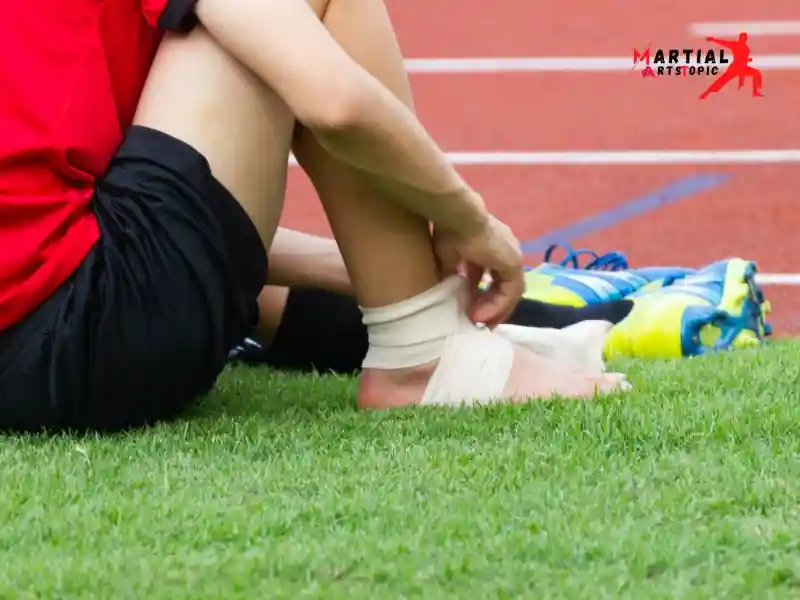
Martial arts training, especially in disciplines like French Kickboxing, is not just about honing your skills and improving your physical fitness. It also involves understanding the importance of safety and injury prevention.
- Warm Up and Stretch: Before any training session, it’s crucial to warm up your muscles and stretch properly. This helps prevent injuries such as strains and sprains by increasing blood flow to the muscles and making them more flexible.
- Use Proper Equipment: When engaging in French Kickboxing, make sure to use high-quality protective gear including gloves, shin guards, mouth guards, and headgear. This equipment not only provides protection but also enhances your performance during training or sparring sessions.
- Focus on Technique: Proper technique is not only vital for effective strikes and defense but also plays a significant role in injury prevention. Learning the correct form from a qualified instructor can reduce the risk of injuring yourself or others during practice.
- Listen to Your Body: Pay attention to any discomfort or pain during training. Pushing through an injury or ignoring warning signs from your body can lead to more severe problems down the line. Rest when needed and seek medical attention if an injury occurs.
- Stay Hydrated: Dehydration can lead to muscle cramps and fatigue, increasing the likelihood of accidents or injuries during training. Keep a water bottle handy and hydrate yourself before, during, and after your French Kickboxing sessions.
- Respect Your Opponent: Whether you’re sparring in class or participating in a competition, always show respect towards your training partners or opponents. Practicing control and respecting boundaries reduces the risk of unnecessary injuries during contact drills or fights.
- Cross-Train for Balance: While French Kickboxing is an excellent martial art on its own, incorporating other forms of exercise can help build overall strength, flexibility, and endurance which contribute to injury prevention.
Benefits of Practicing French Kickboxing
French Kickboxing, also known as Savate, offers a wide range of benefits for both the body and the mind. This unique martial art combines elements of traditional boxing with high kicks, making it an excellent full-body workout that improves cardiovascular health, agility, and overall strength. Practicing French Kickboxing also enhances flexibility, balance, and coordination, making it a brilliant choice for individuals looking to improve their physical fitness. The mental benefits of this martial art include increased focus, discipline, and self-confidence.
Physical Benefits:
- Full-Body Workout: French kickboxing engages multiple muscle groups simultaneously, providing a comprehensive full-body workout. From powerful kicks to precision punches, every movement in Savate requires strength, agility, and coordination.
- Cardiovascular Endurance: The high-intensity nature of French kickboxing promotes cardiovascular endurance and improves overall stamina. Through continuous movement and explosive techniques, practitioners can significantly enhance their heart health and respiratory function.
- Flexibility and Balance: The dynamic kicks and footwork involved in Savate training contribute to improved flexibility and balance. As practitioners refine their techniques, they develop greater control over their body movements and enhance their overall stability.
- Weight Management: Regular practice of French kickboxing can aid in weight management by burning calories and increasing metabolic activity. The combination of strength training and cardiovascular exercise makes it an effective tool for achieving fitness goals.
Mental Benefits:
- Stress Relief: Engaging in the rigorous training sessions of French kickboxing provides an outlet for stress relief. Focusing on technique execution and physical exertion allows practitioners to release tension and clear their minds.
- Mental Discipline: The discipline required to master the intricate techniques of Savate cultivates mental fortitude and focus. Practitioners learn to maintain composure under pressure while honing their mental resilience.
- Confidence Boost: As proficiency in French kickboxing grows, practitioners experience increased self-confidence both inside and outside the training environment. The sense of accomplishment from mastering new skills translates into enhanced self-assurance.
Emotional Benefits:
- Empowerment: The empowerment gained through learning self-defense techniques in French kickboxing fosters a sense of security and empowerment. Practitioners develop the ability to protect themselves while gaining confidence in their physical capabilities.
- Camaraderie: Training in a supportive community environment provides opportunities for social interaction with like-minded individuals who share a passion for martial arts. This sense of camaraderie contributes to emotional well-being and creates lasting friendships.
Conclusion
French Kickboxing, also known as Savate, is a fascinating martial art that combines elements of traditional boxing with dynamic kicking techniques. Its emphasis on agility, precision, and footwork makes it a unique and effective form of self-defense and physical conditioning. Whether you’re a beginner or an experienced martial artist, exploring the world of French Kickboxing can lead to improved fitness, self-confidence, and a deeper understanding of combat sports. Embrace the challenge and discipline of this art form, and let it inspire you to reach new heights in your martial arts journey.
